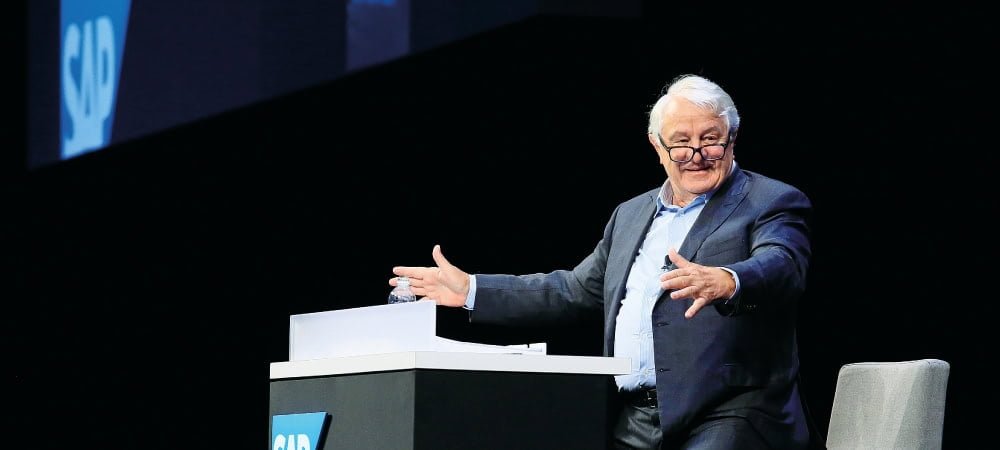Proven and new
Whether still in the planning stage or in the middle of the changeover to S/4HANA - S/4 integration topics have to be taken into account by SAP ECC user companies both during migrations and during new implementations and cause project and budget expenditures. Roughly speaking, this involves SAP-to-SAP and SAP-to-Non-SAP integration.
SAP Integration Tasks.
- As a guideline from Seeburger's practice, the following applies to S/4HANA projects:
- 70 percent of integration tasks are SAP-to-Non-SAP integrations.
- 20-40 percent of the budget is spent on system and application integration.
- 60 percent of SAP users consider integration to be very time-consuming and cost-intensive.
- 40 percent of SAP users see underestimating integration as a risk of not achieving their S/4HANA project goals by 2025.
The scope of the integration challenges is illustrated by the simple example of SAP-to-SAP: The SAP community reacted with joy to SAP's announcement that it would provide a total of four business processes as integration content out-of-the-box for the integration field "SAP ERP to SAP Cloud Applications".
Since SAP currently only has just under 300 products and around 200 cloud services in its portfolio, one could say that this is not nothing, but also not a lot. It makes one think that the use of the integration content and SAP technology provided is currently only free of charge as long as these integration scenarios are used in the standard without any adaptation. So prudence is also called for when it comes to ongoing operating costs.
An S/4 migration involves a number of innovations and surprises. For example, integrations in an existing SAP ERP ECC environment cannot simply be transferred to an S/4 environment with the hand on the sleeve. This can be illustrated with the simple example of the robust and widely used ALE/IDoc interface: The available IDoc types in S/4 have undergone changes compared to ERP ECC.
Details at a glance
Furthermore, the number of IDoc types has been minimized. The consequence: Every existing interface that has been realized via IDoc so far has to be analyzed and almost certainly has to be adapted. Incidentally, SAP S/4HANA Cloud Essentials (Multitenant) no longer provides IDocs and ALE technology. SAP integration architects are increasingly reluctant to use IDocs and ALE technology in S/4 projects and are asking themselves the question: is IDoc and ALE technology future-proof? The same applies to well-known processes such as JCO, BAPIs or RFC.
Everything that was common practice with ERP ECC on the subject of integration is therefore initially put to the test with S/4. Nevertheless, in Seeburger's view, the robust IDoc interface is still very successful and can be used efficiently in large S/4HANA projects.
For example, in S/4HANA on-premise projects, where the reduced set is sufficient to cover the project requirements. But if every interface now has to be analyzed, adapted, and tested, shouldn't it be better to consider what future-proof and powerful integration options S/4 offers?
Possible alternatives
What alternatives are available? The OData interface offers itself as a synchronous API interface as a modern and future-proof alternative for all integration requirements. However, a look at the SAP API Business Hub unfortunately leads to a certain disillusionment: the availability of this technology for a wide range of integration tasks is still greatly expandable - but is growing all the time. Furthermore, this synchronous interface is not suitable for all integration scenarios. Thus, even with a high degree of coverage in the future, it does not represent a universal solution for all scenarios.
The proprietary SOAP interface SAP RM (Reliable Messaging) offers asynchrony and also a higher degree of coverage of possible interface requirements. SAP RM presents itself as an interesting alternative to ALE/IDoc technology in S/4HANA: for example, when it comes to document-based integrations such as for EDI and B2B integrations. Like OData, SAP RM is also available as a technology for all S/4 options.
For event-driven integration scenarios, for example for master data synchronization, the use of Business Events is the first choice. Since Business Events have also been available in SAP ECC since 2020, they are also very well suited for brownfield projects to ensure data consistency between SAP ECC and S/4HANA.
Integration specialists are eagerly awaiting the further development and usability of the so-called "SAP One Domain Model" and the introduction of SAP Graph as essential key factors for integration scenarios. So much for the focus on the SAP S/4HANA world.
For user companies, however, the integration of the non-SAP world represents the greatest challenge: The range of required integration technologies is spread across existing legacy systems, analytics solutions (for example, from public cloud providers), store floor systems, IoT platforms, cloud-based third-party applications such as Salesforce, Workday, or Coupa, connectable market
and store systems or industry platforms and much more. The integration patterns required in projects range from push & pull to events and real-time or batch processing.
In addition to supporting the technologies (SAP and non-SAP) and integration patterns, central integration platforms must solve the task of processing bulk data and streaming data in parallel without impairing the synchronous processing of granular information objects in real-time processes. At this point, the wheat will be separated from the chaff - something that many SAP user companies are not yet aware of.
Ways to success
From Seeburger's point of view, previous experience from day-to-day project work on S/4 migrations and new implementations with integration topics has clearly shown that two points are of central importance for project success: on the one hand, the use of experienced interface experts with profound and long-standing SAP know-how, and on the other hand, the use of powerful integration platforms that take into account all integration requirements as far as possible.
Seeburger Business Integration Suite (BIS) is the only comprehensive hybrid integration platform offering on the market, based on a neutral platform, with extensive content from a single source and available as a multi-cloud variant as well as on-premises.





